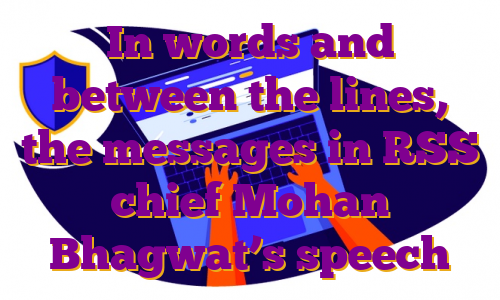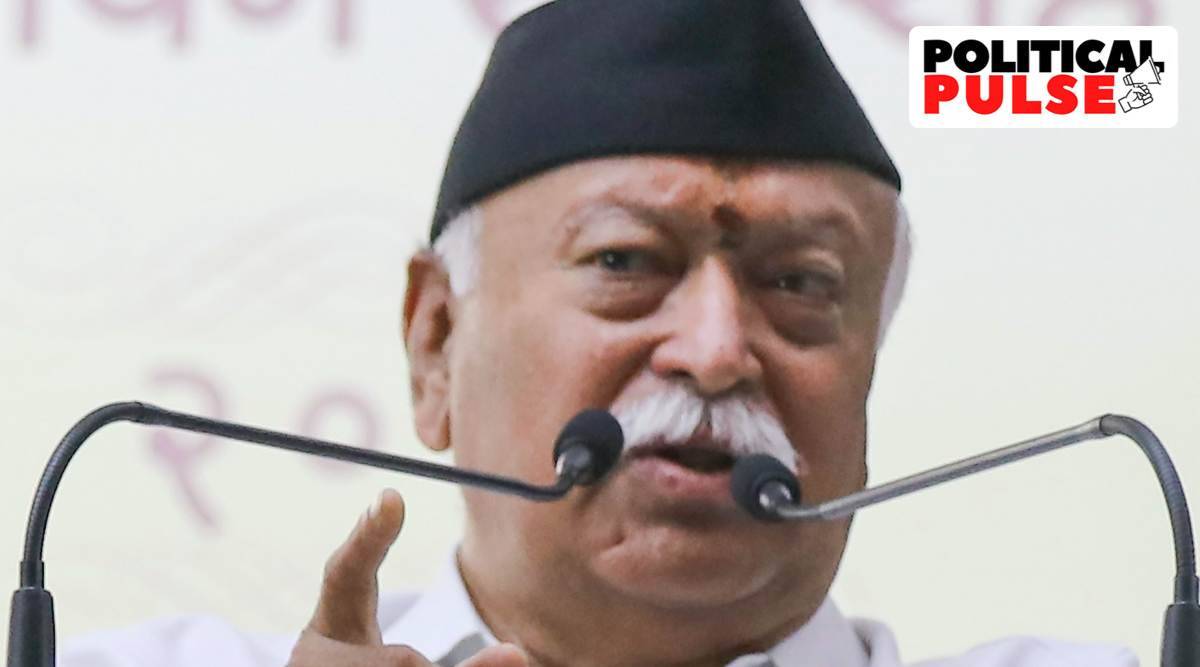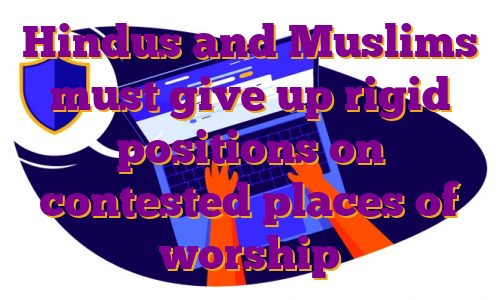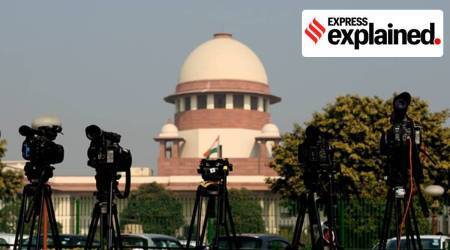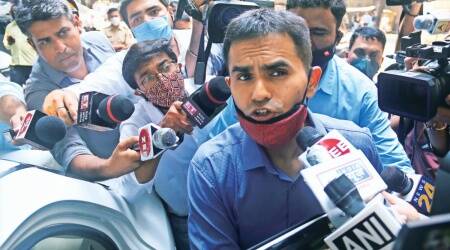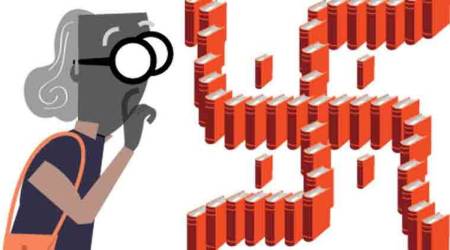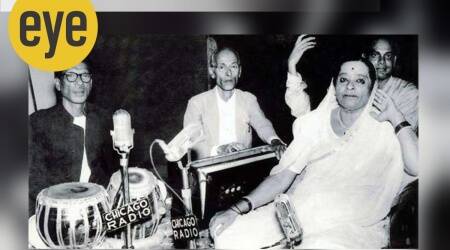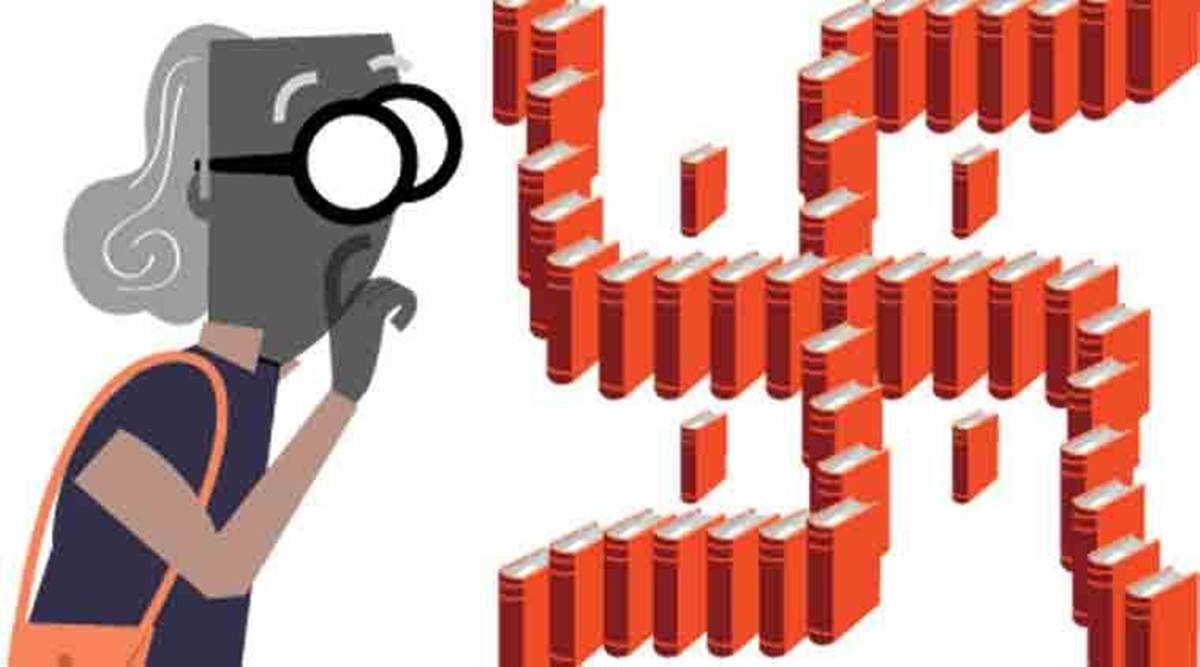RSS chief Mohan Bhagwat packed several messages in one address before a gathering of swayamsevaks in Nagpur Thursday. He supported the Hindu claim over the Gyanvapi Mosque in Varanasi on grounds of both “issues of faith” and “historical facts”, but emphasised that the Sangh does not support claims from across the country regarding numerous historical sites. He repeated that Islam came to India via “invaders”, but stressed that the followers of the faith in the country were “not outsiders”.
Speaking on the Kashi Vishwanath-Gyanvapi Mosque controversy for the first time, Bhagwat said the row had started years ago, for which no one in the present, on either side, could be held responsible. “Gyanvapi has a history which we cannot change now. We did not create that history. Not today’s Hindus, not Muslims. It happened then. Islam came here with the invaders. In these attacks, temples were destroyed to subdue the morale of those seeking freedom for this country. There are thousands of such temples. Issues of temples, which hold special significance in the hearts of Hindus, are now being raised… One should not raise a new issue every day. Why escalate fights? Regarding Gyanvapi, our faith has been there for generations. What we are doing is fine. But why look for a Shivling in every mosque? What happens in mosques is also a form of prayer. Okay, it has come from outside. But Muslims who have accepted it are not outsiders, (we) need to understand this. Even if their prayer is from outside (this country), and they wish to continue with it, we are fine with it. We are not opposed to any form of worship.”
In the case of Gyanvapi, the petitioners on the Hindu side have claimed that a videographic survey ordered by the court has discovered a shivling inside the mosque. The matter is in court.
The gathering addressed by the RSS chief included more than 700 swayamsevaks selected from across the country gathered for a training programme that began on May 9.
Bhagwat reinforced the line that the BJP too has adopted in the wake of a series of court cases on disputes similar to Kashi: that these rows, including Gyanvapi, should be settled by courts or mutual consent, and that there would be no campaign or agitation by the Sangh.
“It was a very clever warning to hardliners that are seeking to raise disputes regarding every other monument or mosque. At the same time, the Sarsanghachalak extended the organisation’s moral support to the Gyanvapi issue,” a senior BJP leader who works closely with the RSS said.
The leader added that the message was significant as “it’s a fact that many Islamic monuments were built after demolishing temples or Hindu places of worship. “But, as he said, that doesn’t mean that every place can be claimed, and today’s Muslims cannot be held responsible for it.”
BJP sources said the fact that Bhagwat delinked Indian Muslims from what had happened in the past, adding that their ancestors were Hindus as well, was also important. Incidentally, the BJP government in Assam has already announced that it will identify “Assamese Muslims” as a distinct group (from Muslim immigrants).
The RSS Sarsanghachalak’s remarks came three weeks after Sunil Ambekar, the RSS’s Akhil Bharatiya Prachar Pramukh (all-India publicity in-charge), said “historical facts” cannot be hidden for long, while taking about the Gyanvapi dispute. “I believe we should let facts come out in the open. In any case, truth always finds a way to come out. How long can you hide it? I believe the time has come to put historical facts in the right perspective before society,” he said.
A BJP leader said that Bhagwat’s statement was made keeping in mind the vast potential of demands regarding disputed sites escalating – a book by Sita Ram Goel and Arun Shourie, Hindu Temples — What Happened to Them, places their number at 1,800 across the country, the VHP says it is closer to 30,000 plus. As per this leader, apart from Kashi, the Sangh would stress on resolution of the Mathura Krishna Janmabhoomi-Shahi Idgah Mosque dispute.
Another BJP leader said: “Bhagwatji’s was a statesman like speech, from a position of strength and confidence. He has given both a philosophic and practical solution, that we don’t hold either Hindus or Muslims responsible for the past.”
The leader hoped that the Muslims too would take a message from his speech. “Muslims should forget the past. You cannot find glory in anti-Hindu Islam. What he suggested was a framework for the RSS to look at these controversies.”
Incidentally, it had taken the RSS years after the VHP launched an agitation for the Ram temple in Ayodhya to pick up the same. It took even longer for the BJP to embrace the movement officially – with a political resolution at its National Executive meeting in June 1989.
Prime Minister Narendra Modi is believed to hold the same view that any new temple-mosque disputes should be resolved by consultation or courts, rather than agitation, according to senior BJP leaders, including ministers.
However, a BJP leader said, this does not mean that either the party or the RSS will stop pushing for amendments to the Places of Worship (Special Provisions) Act, 1991, which freezes status quo on places of worship as they existed on August 15, 1947. “That demand remains. It won’t be from the BJP or the RSS, it reflects the sentiments of the Hindu majority.”
.

